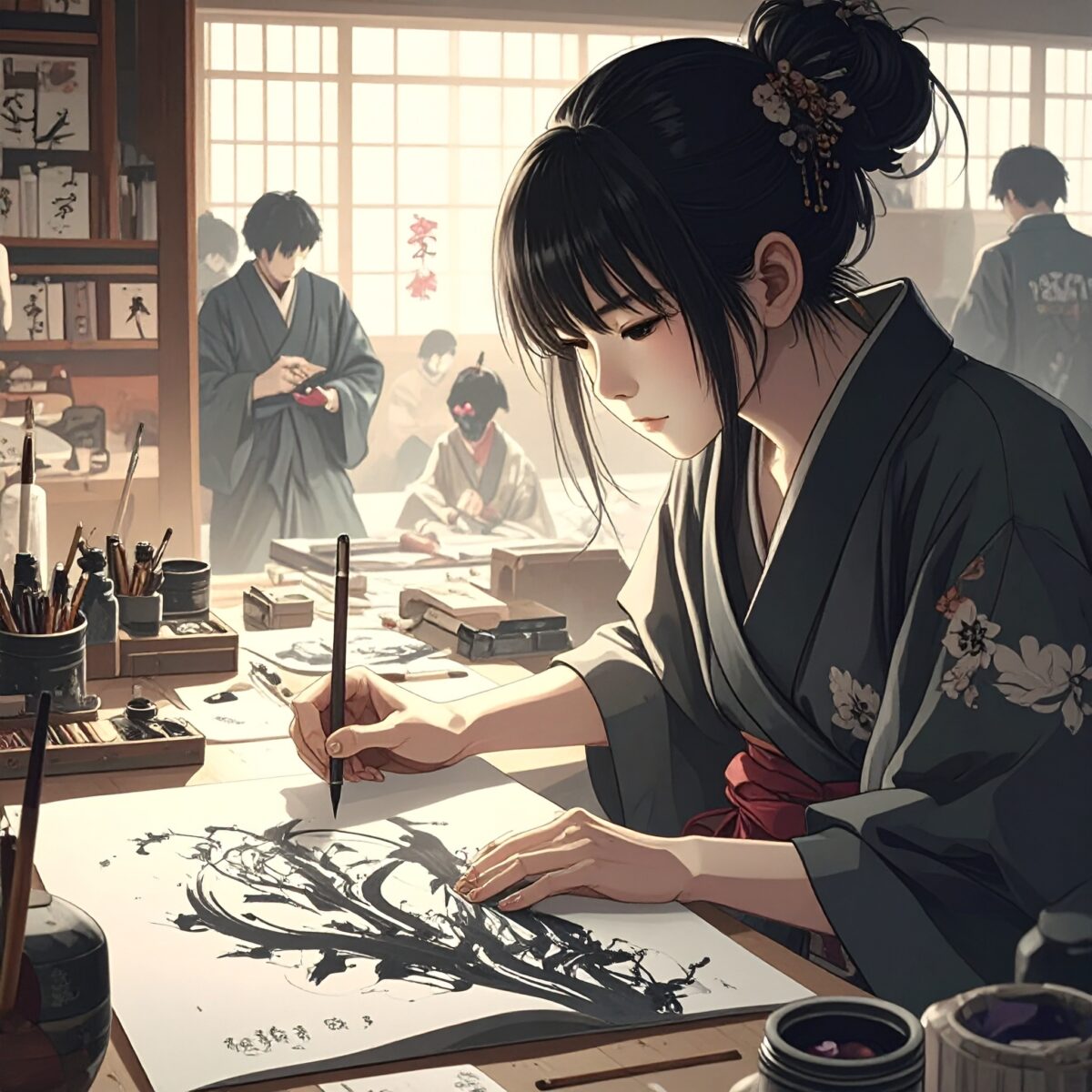In the stillness of writing a single character with mindful intention, one experiences emotions and subtle shifts of spirit that words alone cannot fully express. Japanese calligraphy, or shodō, is far more than handwriting practice—it is an aesthetic tradition rooted in mindfulness, focus, and the expression of the self. At the heart of this tradition lies sumi—the ink itself.
This program invites participants to not only experience the beauty of calligraphy but also explore the origins of ink-making, offering a deep appreciation for the artistry and intention behind every brushstroke.
In the first half of the experience, participants learn about the traditional process of ink production. Sumi is crafted from natural materials—pine soot and nikawa (a type of animal glue)—carefully molded and air-dried over months or even years. The drying process demands skilled craftsmanship, guided by changes in temperature, humidity, and the artisan’s intuition. Some workshops allow participants to observe key parts of this process, remove a mini ink block from its mold, or even create scented ink (kōboku) using aromatic blends.
Grinding ink on an inkstone is a quiet, sensory ritual. Water is gently added, and the ink is slowly ground in circles. What begins as a pale wash gradually deepens into a rich, black ink—calming to watch, soothing to the spirit. As the scent of the ink rises, the breath naturally slows, creating a meditative transition into writing.
The second half of the program moves into hands-on calligraphy. Participants choose their own words—be it a place from their journey, their name, or a single kanji character that resonates with them—and learn how to bring it to life on washi paper. Guided by an experienced instructor, even beginners can find confidence through lessons on how to hold the brush, apply pressure, and feel the rhythm of each stroke. Many workshops are also designed with children in mind, incorporating playful elements to make the art form accessible and enjoyable for all ages.





